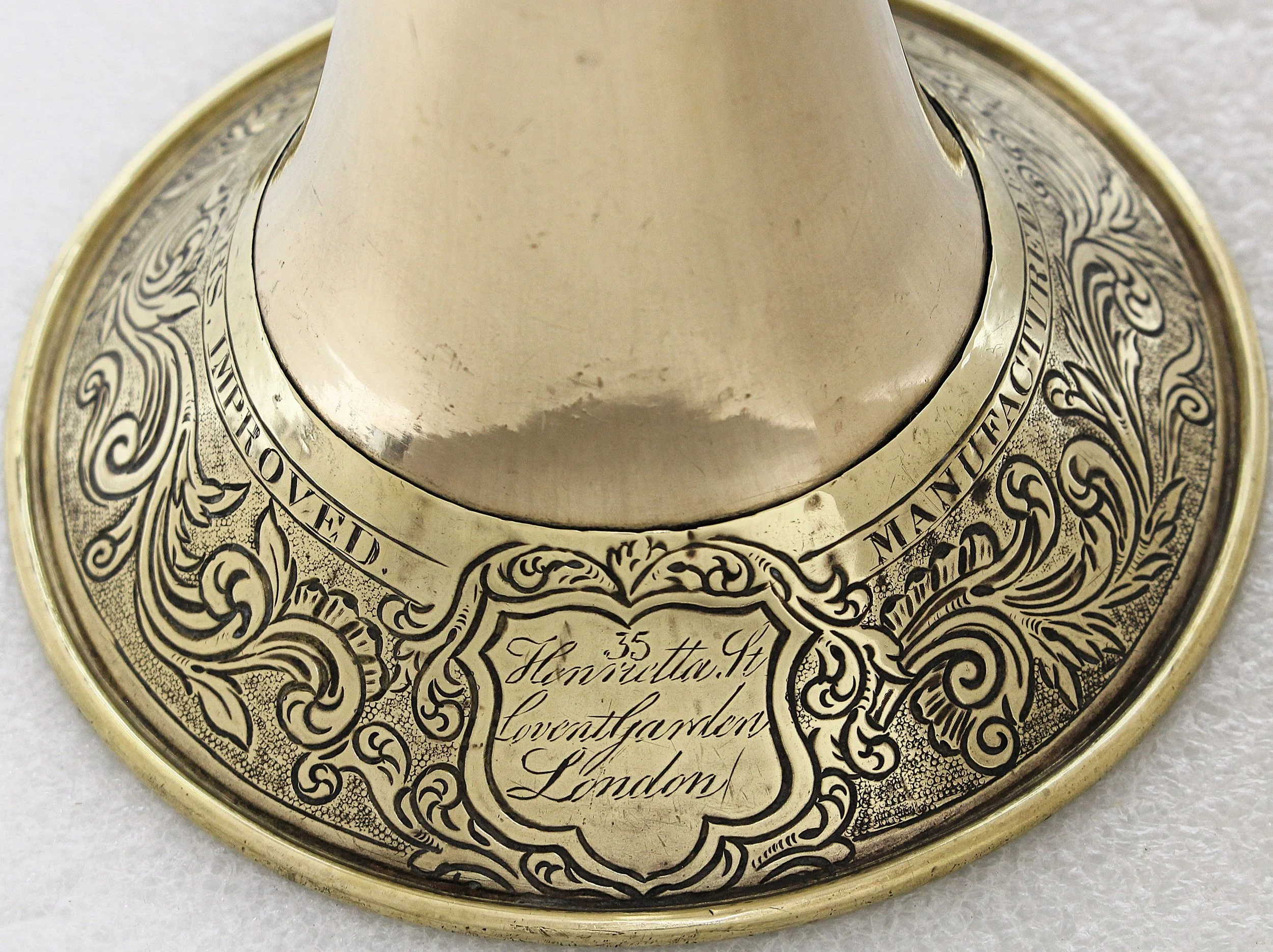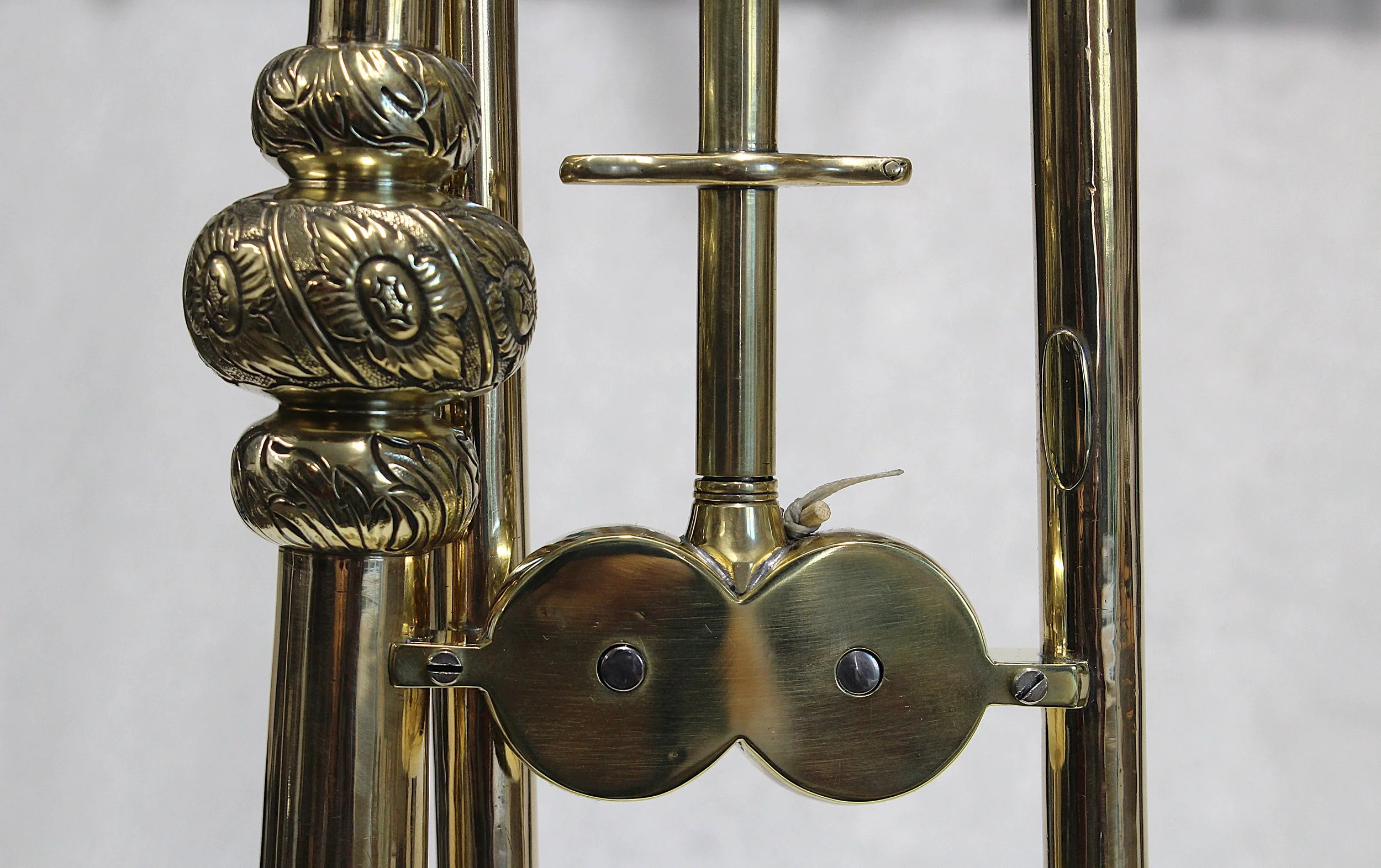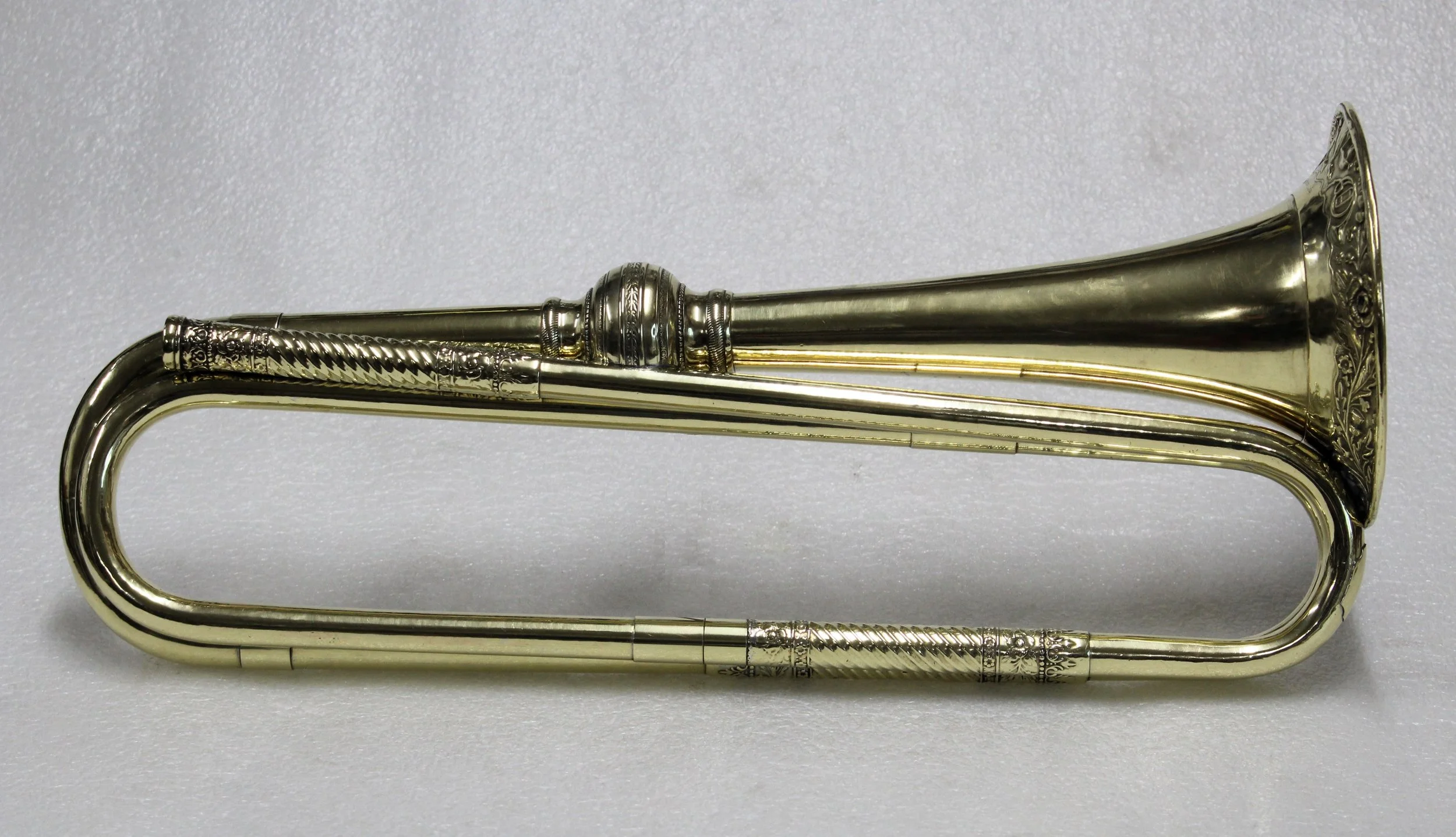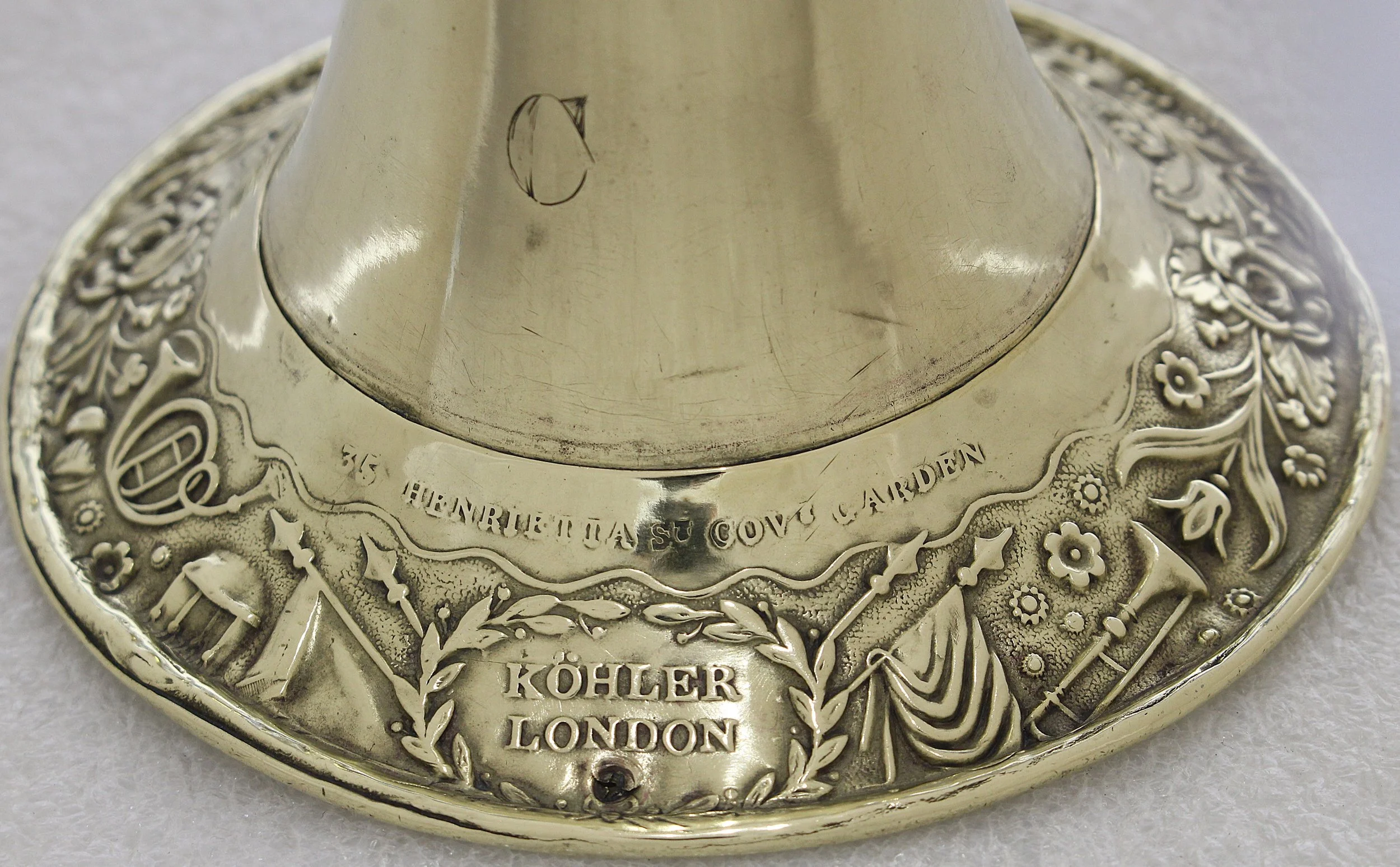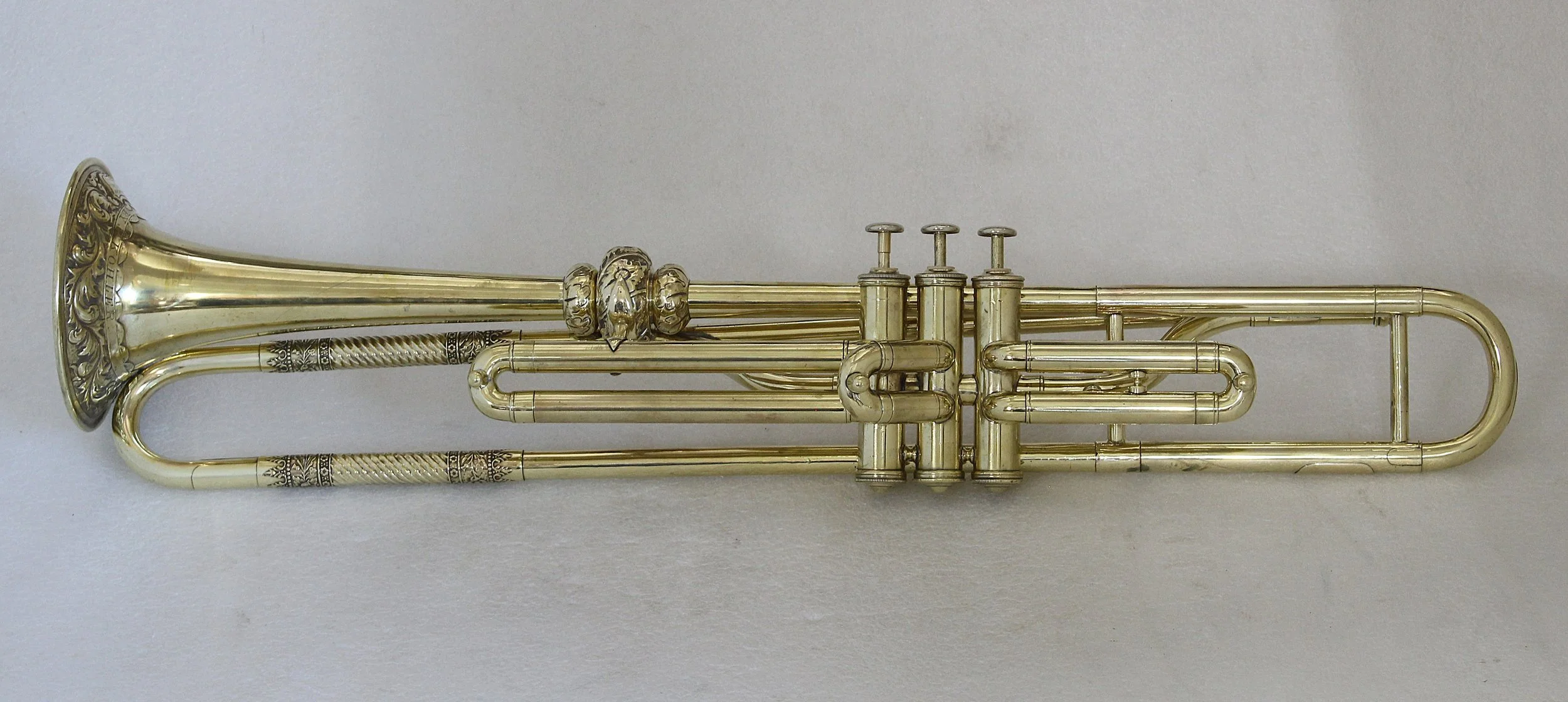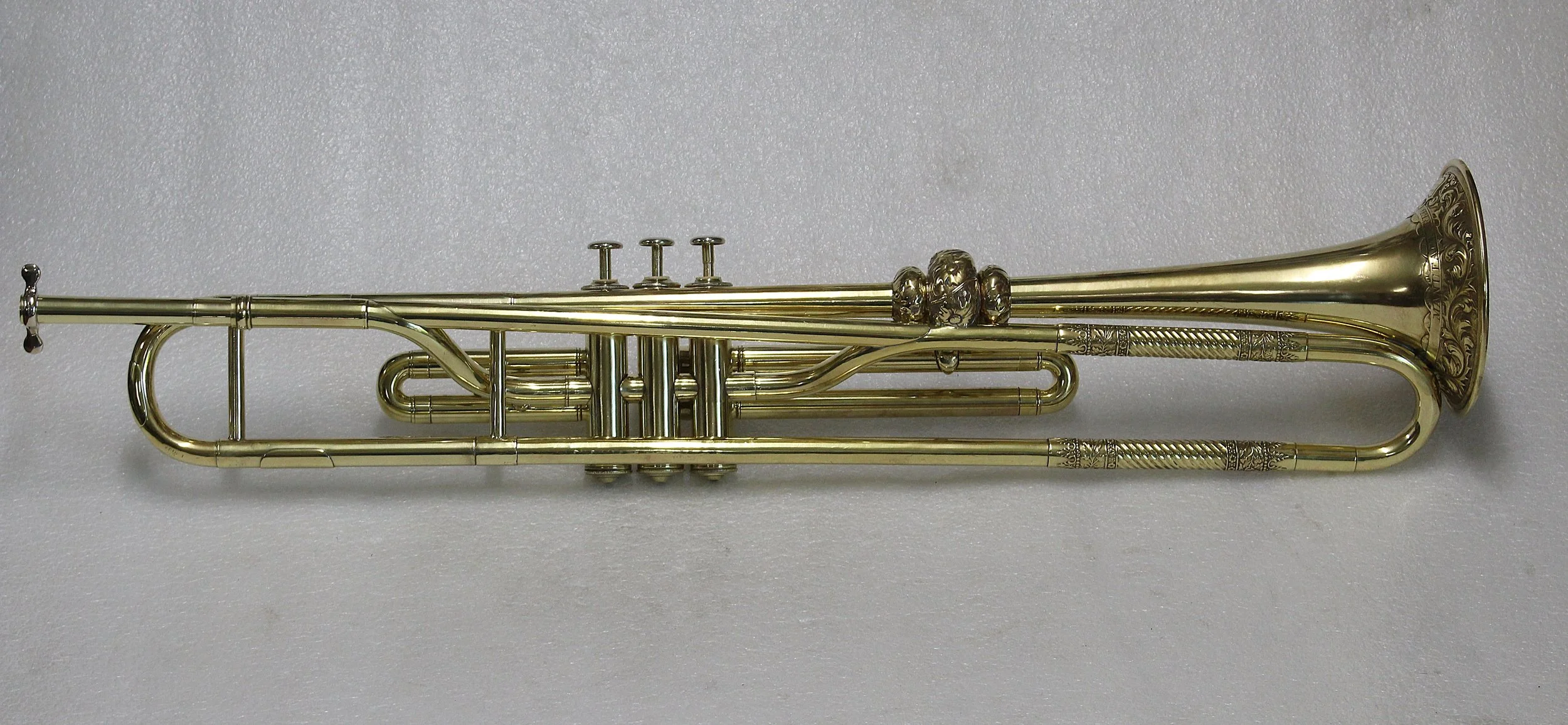Trumpets in F by John Köhler
The English slide trumpet was the most popular choice for orchestral performances in Britain during the first half of the 19th century, and was the choice of conservative players, including Thomas Harper Jr., until at least the late 1880s and by a few others into the 20th century. The most accomplished maker of these was John Augustus Köhler, whose great uncle and father, both named John, came from Germany and established as brass instrument makers in London by the 1790s. John Augustus established his own shop in about 1830 and started making “T. Harper’s Improved” slide trumpets in 1833. He learned the trade from his mother, Elizabeth Köhler and Thomas Perceval, who likely worked with the firm until John Augustus was old enough to establish his own shop. The two elder John Köhlers had died before his birth. Both of these men were born in Hesse (present day Germany), the elder came to England as a mercenary and became a bandmaster, then learned brass instrument making. A complete listing of known instruments made by the Köhler family is maintained by Arnold Myers and can be seen on the University of Edinburgh’s website. Köhler also made trumpets with Stölzel, Perinet and Macfarlane’s disk valves as well as other brass instruments popular in those years. Most of this historical information comes from Lance Whitehead and Arnold Myers, “The Kohler Family of Brasswind Instrument Makers”. Historic Brass Society Journal (ISSN 1045-4616), 2004
This very rare English slide trumpet belongs to Scott Clements, a collector of Köhler brass instruments, who entrusted it to me for some repairs and reproduction of the missing parts. It retains its original crooks for Eb and C as well as the exceedingly rare original mouthpiece. Even when original mouthpieces are preserved with an instrument this old, they are often badly damaged or worse, modified. This one is in excellent, original condition.
The parts needed to complete the kit were the shank for F (curved so that the slide clears the player's cheek), three tuning bits and the crooks for E natural and D. Having had a very similar Köhler trumpet in the shop years ago and having made a replica of it aided this process. The "clock springs" inside the barrels were present, but broken. Fortunately, there are suppliers of parts for clock restoration that can be modified to work in this application. The original gut strings were also present, but broken. The replacements were made from nylon strings to avoid the complications involved with gut. There are two spring barrels and strings so that if a string broke during a performance, the second string, which can be seen sticking out of the barrel case, can be pulled and inserted in a notch in the finger push bar.
The trim on this instrument appears to be Sterling silver, but with no hallmarks, it is almost certainly Sheffield plate, which is a thick layer of silver on a base of copper, brass or nickel silver. In this case, there is no obvious base metal to be seen on the edges of the parts making me think that it must be nickel silver base metal. The decoration on the bell garland is repoussé, chased from behind, and then chased and engraved on the outside. The ball is made from four thin wall pieces, silver soldered together, and then the decoration is chased by hand. The long ferrules are made by rolling the design into sheets that are then formed into tubes. Köhler was at 35 Henrietta Street from 1834 to 1878, but based on the number "90" engraved on the spring case, it is believed to have been made in the early 1840s. It is made to play at A=435Hz, but can also be played at modern pitch.
Another example, pictured below, belongs to British trumpeter, Will Russell. As found, it was missing all the crooks and bits as well as the spring slide return assembly, which would have had the serial number engraved on it. Based on the marks left on the bell and middle yard, it was determined that it did originally have the clock spring mechanism, so a reproduction was made and installed as seen below. The slightly simplified decoration indicates that it was likely made in the 1850s or later, although before Köhler’s son joined the firm in about 1862. The bell garland has shallower decoration, being chased from the outside only and the ball is a brass casting, rather than being built up from sheet brass.
A third example from the Utley Collection in the National Music Museum is pictured below. It is believed to have been made in 1881, based on the address printed on the label in the case. Köhler’s son had joined the firm in about 1862. It is pitched about a half a tone higher than the two earlier examples, the over all length of the trumpet, without attachments, is 22 1/4 inches (56.2cm), compared with 23 inches (58.4cm)of the others. The bore through the slide is the same in all three, at .441 inches (11.2mm), but the bell diameter is slightly under 4 1/4 inches (10.48cm), compared to 4 3/8 inches of the earlier trumpet. The engraving: "T. Harper's Improved" indicates an endorsement by Thomas Harper Jr., the leading trumpet soloist in London for many years. Thomas Harper Sr. had started endorsing the same design starting in 1833.
Next is a field trumpet of similar dimensions, but twice wound, making it much more compact for military use, also in Scott Clements’ collection. The decorative ferrules are made by the same tool as the trumpets above, but the repoussé decoration on the bell garland is of a very different character. The ball is cast from brass and the decoration appears to have been applied on the lathe, including knurling, beading and embossed-style, all applied with rolling tools. This trumpet has survived due to many years that it served as a table lamp. It may be the earliest of the trumpets presented here, although impossible to assign a date with great confidence.
The Köhler valve trumpet featured below, also from Scott Clements’ collection, was likely made in the late 1850s or early 1860s before his son joined the business. The deep repoussé decoration on the bell garland and the ball being built up from four pieces of thin brass may indicate an earlier date (watch the video below to get a better view of the depth). This is the only example known in this configuration, using the same basic design as the slide trumpets, and also the decoration. The bore through the tuning slide is .441 inches (11.2mm), the same as in the slide trumpet slides, but the bore through the valves is .433 inches (11mm). Köhler had made trumpets, cornets and other instruments with valves earlier than this, but using Stölzel, double piston and the very unique “Shaw’s Patent Lever” disc valves. These earlier style valves all seem to have been discontinued by 1860 and in 1862, they began making “Bayley’s Acoustic Cornet” and “Bayley’s Improved Acoustic Handelian Trumpet”, both designed by John Bayley Sr. These have Berliner piston valves, but with details indicating the same valve maker as the Perinet valve seen here. The earliest use of Perinet piston valves by Köhler seems to be Bb cornets in the style of Courtois’ “New Model” that was introduced in 1855. This trumpet may pre-date the earliest of those cornets, but we have no precise method of dating either.
360 degree view of bell garland on valve trumpet during restoration.











